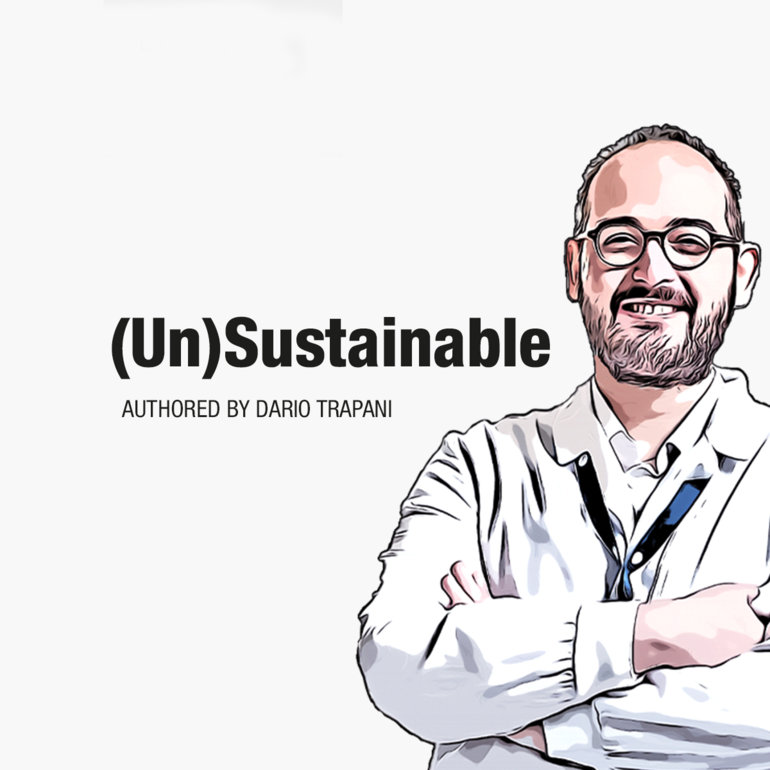People think cancer care is unaffordable because of the high prices of cancer medicines. Some state that innovations in oncology mostly happen thanks to massive investments in the private sector.
Without forward-looking entrepreneurs with brilliant visions and smart ideas, who address unmet health needs, we wouldn’t have observed any meaningful improvements of cancer research in the last 30 years. They are also convinced that the contribution from basic science and academia to progress is not tangible: it is negligible.
This narrative serves to emphasize that high costs are just unavoidable. It cannot be said out loud that pricing of cancer medicines may be part of the problem - it is taboo.
High price of medicines: a definition is lacking
In April 2021, stakeholders from 125 countries reconvened in an international forum hosted by the World Health Organization (WHO). Participants joining the WHO “Fair Pricing Forum” believe that the price of a medicine should allow for meeting social needs, without increasing disparities (BMJ. 2020 Jan 13;368:l4726). The lack of transparent regulations and defined criteria to structure “fair” prices are drivers of inequities. A key recommendation of the WHO Forum is to work on definitions and metrics to inform price-setting. While it may be clear that high prices will ultimately affect the access to cancer care for vulnerable fringes of the population, nowadays there is no clear agreement on what is a high price.
What can be the trade-off between affordable care through fair pricing, sustainability and innovation in oncology? In principle, the protection of patients from incurring in unacceptable financial toxicity while avoiding systematic bankruptcy should be a fundament of policy-making. We can retrieve some definitions of affordable access to care. For example, catastrophic health expenditure can be declared when 40% of a household’s income or 25% of household expenditure is invested in healthcare, or when people get impoverished below the poverty line due to health-related expenditure (Lancet Glob Health. 2018 Feb;6(2):e169-e179). This is critical from the patient’s perspective. Protecting patients from financial toxicity equals to a community’s priority to protect the most vulnerable persons first, and implicitly comes with the promise of universal health coverage. Therefore, high prices not only impact on individual finances, but can also mine the overall equitable resource distribution among those who are in most need. This means that they must be avoidable. Uncontrolled pricing practices can challenge the sustainability of cancer care and sabotage the value-based allocation of health resources. In fact, unregulated pricing policies are a threat for universal healthcare, by depauperating available resources, and challenging the overall exercise of priority-setting.
Assessing cost-effectiveness of interventions
When talking about sustainability, the magic word here is value. There is an ongoing debate on whether pricing should mirror the value of health interventions within the affordability borders, or prices should be based on the mere likelihood of payers to offer a maximum amount of money. In other terms, we must ask ourselves if a system is fair enough when the pricing of essential medicines and high-value interventions are dictated by the simple laws of markets or somewhat permeated by moral principles. However, in the current system, nobody really gets upset if one offers more than it is worthy for a specific drug. And, in fact, the magnitude of clinical benefit of medicines is never really accounted to set prices.
Historically, metrics to estimate the value of medicines have been based on cost- and effectiveness- proportions, and by adjusting for quality of life. Cost-effectiveness rates can anticipate but do not describe per se the budget impact or the extent of resource utilization. Using the cost-effectiveness to make comparative evaluations can be sometimes misleading, or not necessarily univocal (Bull World Health Organ. 2016 Dec 1;94(12):925-930). In general, scenario-simulations based on cost-effectiveness can help skim the ranges of potentially fair prices, but not really establish one fair price. Some experts argue that cost-effectiveness estimates are totally unfair, as they label the life of people with numbers, when we should try to offer everything possible, at any cost.
To me, this appears anachronistic, as oncology care is moving toward personalised approaches, encompassing treatment de-intensification or de-escalation of therapies. Personalising treatments means to offer the best available option of care to whom is at greatest likelihood to derive the largest benefits and experience the least severity of toxicities. The promise of precision medicine, as it is commonly formulated, should ultimately boost cost-effectiveness rather than downplay it. Nowadays, the trade-off between all we can do, all that is most effective and all that is important for a patient represents the shift from a paternalistic to a patient-centred approach.
When setting therapeutic goals, the debates on where to set the bar should be driven by patient-relevant metrics – that are metrics of value. For instance, the ESMO Magnitude of Clinical Benefit Scale (ESMO-MCBS) is a tool that describes the intrinsic value of cancer medicines, based on the improvement of overall survival and quality of life, and reduced toxicities, regardless of cost considerations. This means that tiers of magnitude of benefit may inform pricing policies, based on a value-informed approach. The ESMO-MCBS method for determining scores are explicit, thus aligning with the WHO and other prescriptions of optimal policy tools for value-based pricing. The use of the ESMO-MCBS to inform priority-setting in Kazakhstan has improved efficiency in health spending, through the selection of high-value cancer medicines and disengagement from low-value care. When implemented as a policy tool, the ESMO-MCBS can enhance the decision-making process, and enable positive population health impacts.
A system to be reformed to reduce disparities
While in principle we shouldn’t want to pay an exaggerated price for low-value drugs bringing scarce health benefits, we shouldn’t even want to accept over-pricing for valuable interventions. High-value interventions are capable to impact on disease trajectories and affect population health – they are essential to humankind. Therefore, there is a moral imperative to enhance access to high-value interventions, through affordable quality care. It is said that fair prices fall between extremes of a range of possible prices, adjusted for the capacity of national payers to afford it (Health Care Anal. 2020 Jun;28(2):121-136). In general, growing evidence reports some benefits for risk-shared decisions — for example, in performance-based and other managed entry agreements — to mitigate the uncertainties, while accelerating access to innovative medicines. In this context, transparent prices are dynamic parameters rather than static problems. We should move beyond a shopping mall-like model - where every good has a price tag and may be sometimes proposed with discounts. More dynamic value-based pricing can boost equity in healthcare, recognising and addressing the circumstances and roots of disparities (N Engl J Med. 2021 Nov 18;385(21):1923-1924).
Nothing will change with price regulations, unless the entire system is reformed. I think that improving knowledge on what is a reasonable or fair price for anticancer medicine is critical today to catalyse the chain of consequential investments or dis-investments/re-investments portending a revolution in access to cancer care. I believe that over-valuing and de-valuing are both wrong attitudes to evaluate new cancer medicines: nihilism and hype are both dysfunctional. However, so far, we have only observed fireworks and celebrations inflating prices, never the opposite. Competent authorities must now play a determinant role in curbing unscrupulous pricing practices, ultimately protecting public welfare.





